Google Analytics Property Vs View
On 15 February 2013, there was a meteor weighing 11,000 metric tons exploded 23 km above Chelyabinsk in Russia. That day, over 12 million people went to NASA's official site to find out the details, which was 16 times as much as the average of daily visitors. Real-time reports registered over 300,000 people at peak, or almost 100 times higher than their regular traffic. And no surprise—most users came from Russia.
All these numbers were available with the help of Google Analytics. And even if you manage a small online store and are not planning to launch rockets into space, Google Analytics will put a lot of power in your hands.
With its help, you will get a tremendous amount of information about your website: from types of traffic to the user experience and how it turns into purchases.
So, what exactly is this tool and how can you start using it? Let's find out.
What is Google Analytics
Google Analytics (GA) is a free* reporting service developed by Google that gathers statistics on website traffic. Along with Google Search Console, it is considered to be a basic analytical service used in SEO and digital marketing.
* There are two versions of Google Analytics: the free standard version and the paid premium Google Analytics 360 aimed at enterprise-level organizations.
The homepage looks like this:
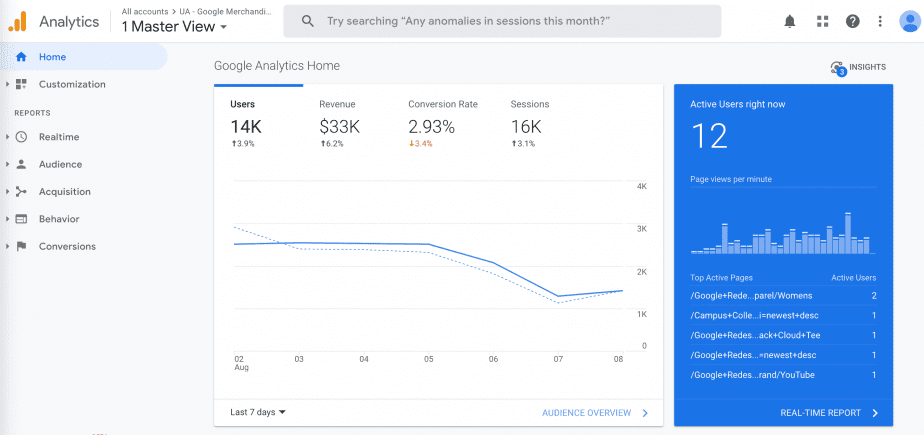
Key reasons to use Google Analytics
Although Google Analytics is a great and comprehensive tool, most people don't use it to its full capacity. However, they should. It is not only easy to figure out for even the least tech-savvy people but also provides you with a lot of worthy information.
Let's summarize some of the reasons why you should use Google Analytics:
- It shows how people find your website. Google web analytics tells how users come to your site. The service monitors how many visitors come from search results, paid ads, social media, third-party websites, or other sources.
- It shows what people are doing on your website. You can find out what pages they visit, what actions they take, how much time they spend on pages, etc.
- It tells who the people visiting your website are. In particular, you can see demographics, geography, their interests, what devices and browsers they use, etc.
- It shows how your website does its job by tracking conversions. For example, you can see how many visitors filled out a form, made a purchase, or subscribed to a newsletter.
Moreover, the service is completely free and fully automated. Even if you have a brand new site, it will start monitoring and collecting information immediately after connecting.
Get started with Google Analytics
So, we have determined why this tool is important. Now, let's move on to the main part—how to set up Google Analytics.
To get started, follow the steps below:
Step 1: Create or log in to your Analytics account
Go to the Google Marketing Platform and create an account by clicking Start for free. If you already have an account, click Sign in to Analytics.
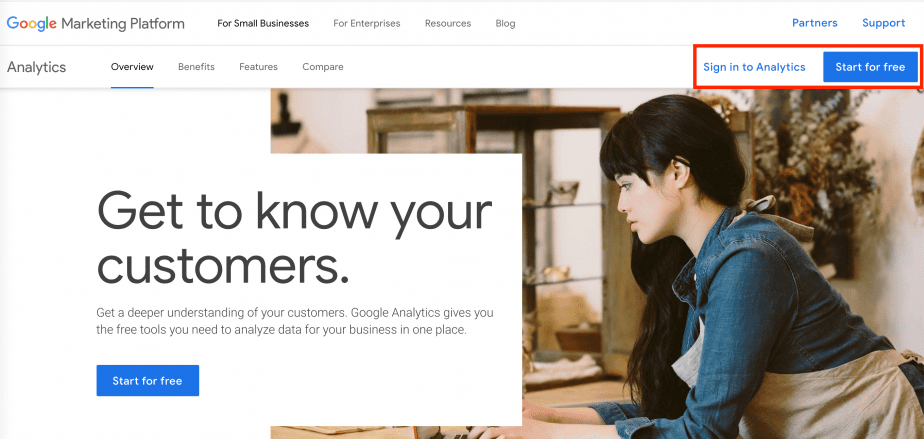
Step 2: Setting up a Google Analytics account
Go to the Admin page to access the Analytics administrative features. Click on the cog on the left to open the Admin page.
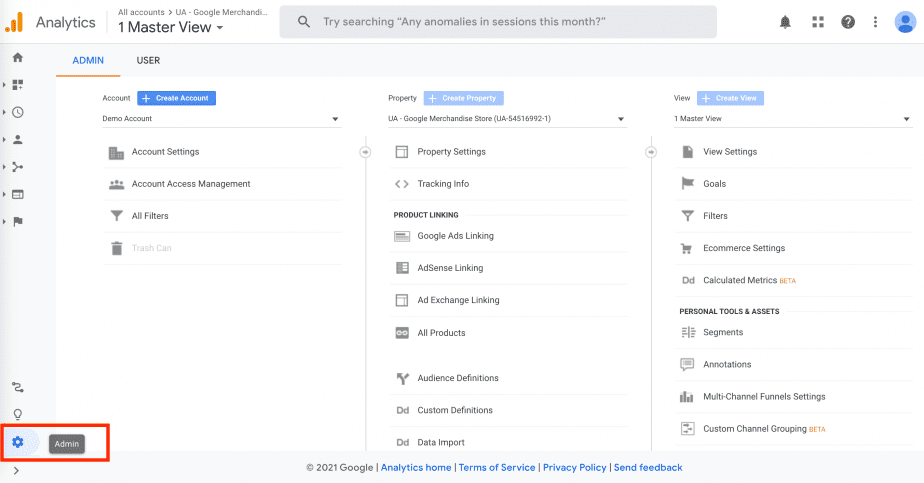
Then, enter the Account name and move on to creating a new property.
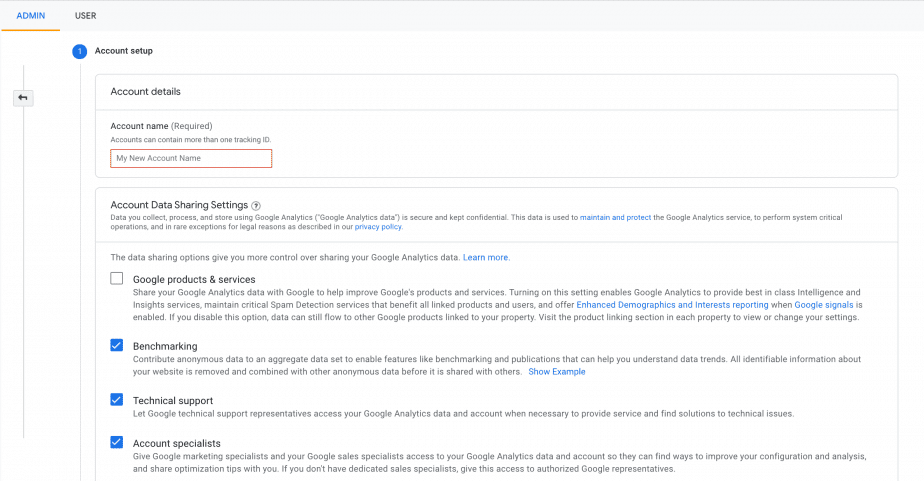
Step 3: Create a new property
A Google Analytics property is located within a Google Analytics account and is a place where your website's information is processed. In other words, creating a property is an essential step that allows GA tracking and collecting data.
For this, enter a Property name, choose the reporting time zone, currency, business niche and size, and choose how you want to use Google Analytics.
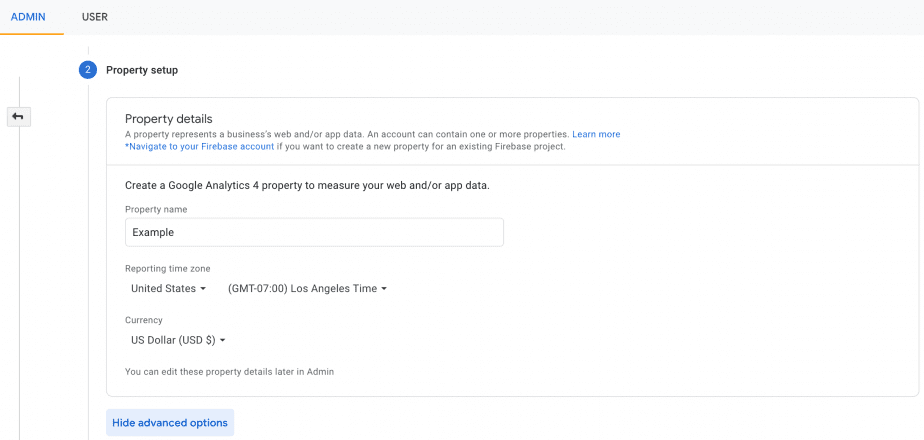
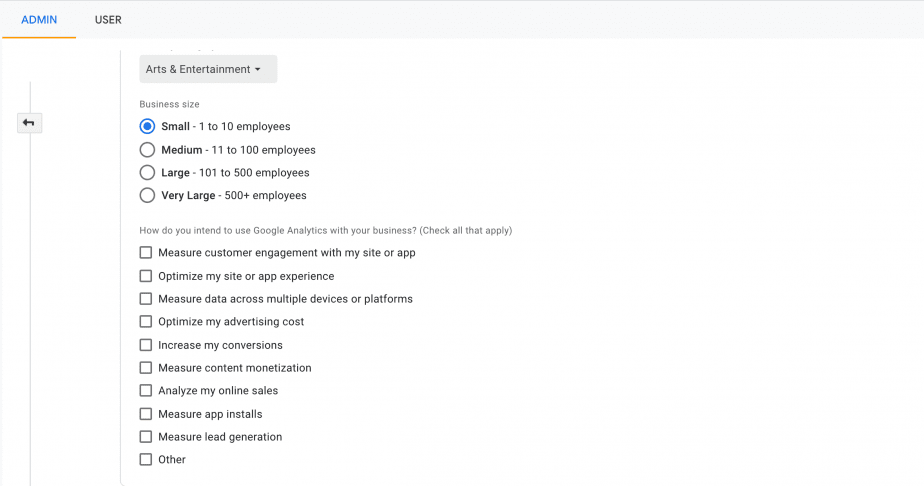
Open the advanced options (under the property-setup fields) and turn on Create a Universal Analytics property.
Choose the HTTP or HTTPS protocol and enter your website URL.
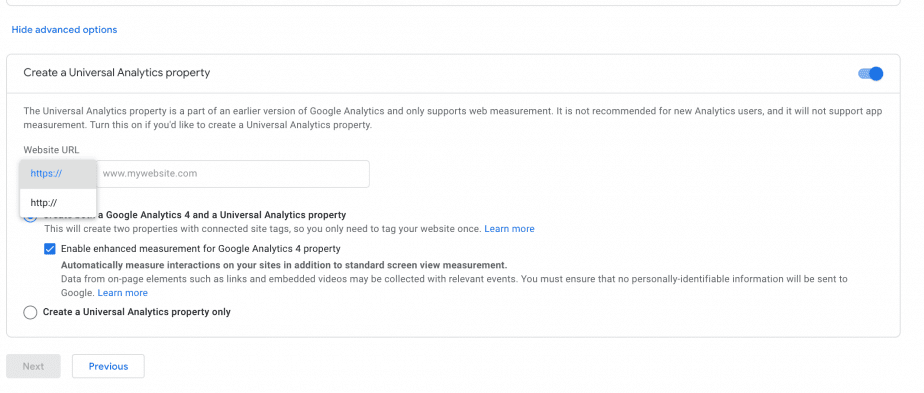
After that, you can either Create a Universal Analytics property or Create both a Google Analytics 4 and a Universal Analytics property.
Google Analytics 4 vs Universal Analytics property
First, let's see what these properties are and what's the difference between them.
In autumn 2020, Google launched Google Analytics 4 (GA4) that replaced the previous version (Universal Analytics, or UA). We would rather avoid the technical details and just note that GA4 is a more beginner-friendly tool, it better describes the customer journey, and has stronger support for cross-device reporting.
Here is what GA4 and UA home pages look like.
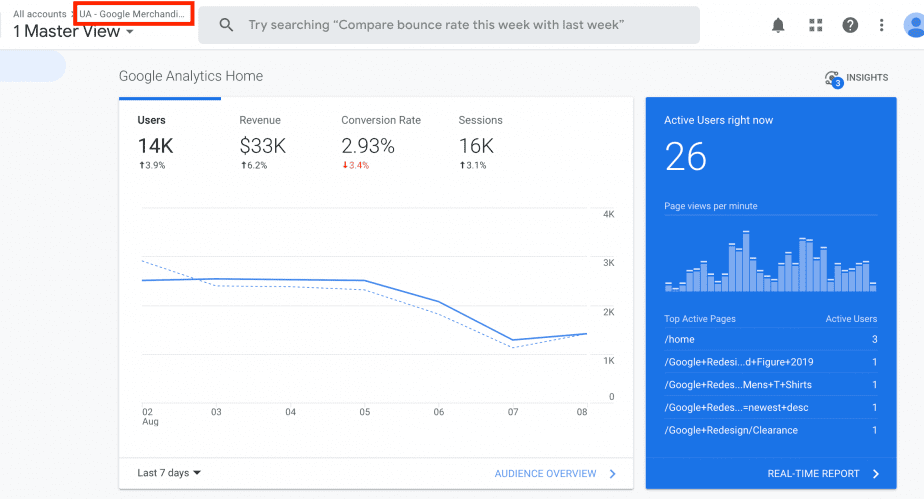
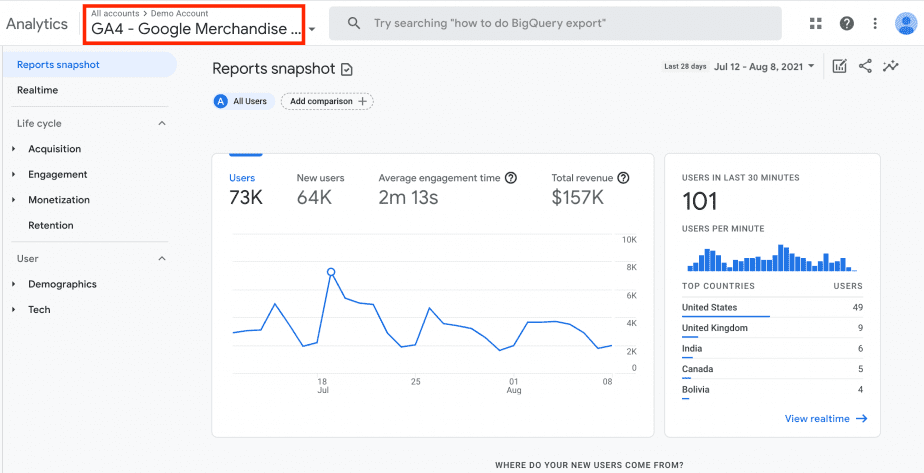
So, if you choose the first option, data will be synchronized and sent to both properties. Thus, if you named your property "Example", your Universal Analytics property will be listed as "Example (UA-57362523)" and your Google Analytics 4 property will be listed as "Example GA4 (29384736)".
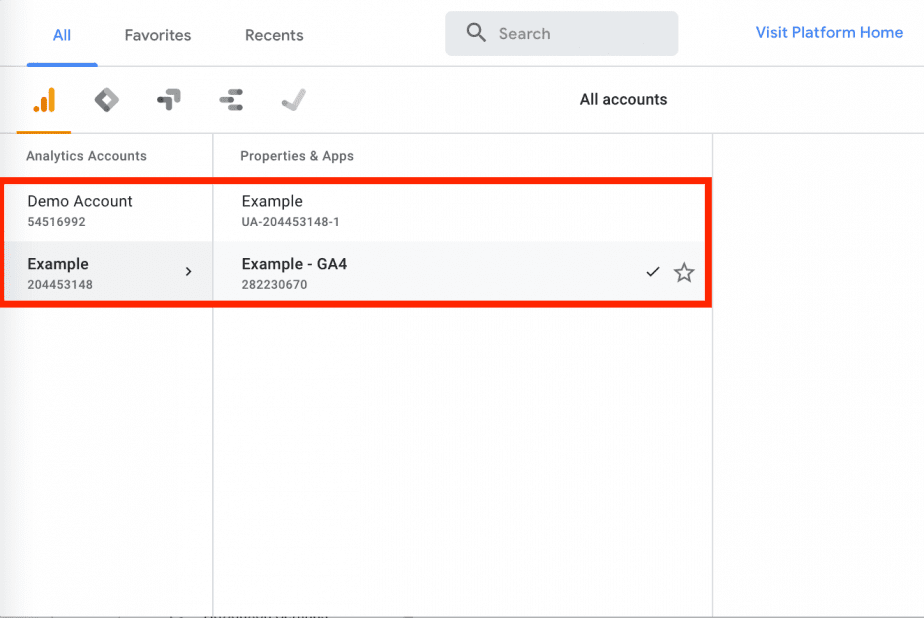
You can also choose to Create a Universal Analytics property.
Taking into account that Google Analytics 4 is still at an early stage, it is recommended to run both UA and GA4 at the same time.
After choosing the property type, click Next, accept the Analytics Terms of Service, and click Finish.
Step 4: Get your Google Analytics tracking code
Now, you are ready to set up Google Analytics website tracking.
For this, go to Admin, choose the property from the list, and open the Tracking info menu.
Use Global Site Tag
One of the more common methods of sending website data to GA is by adding the Global Site Tag on websites. For this, choose Tracking code from the list. Then copy the Global Site Tag (gtag.js) tracking code from your property and paste it before the </head> tag on each page you want to track.
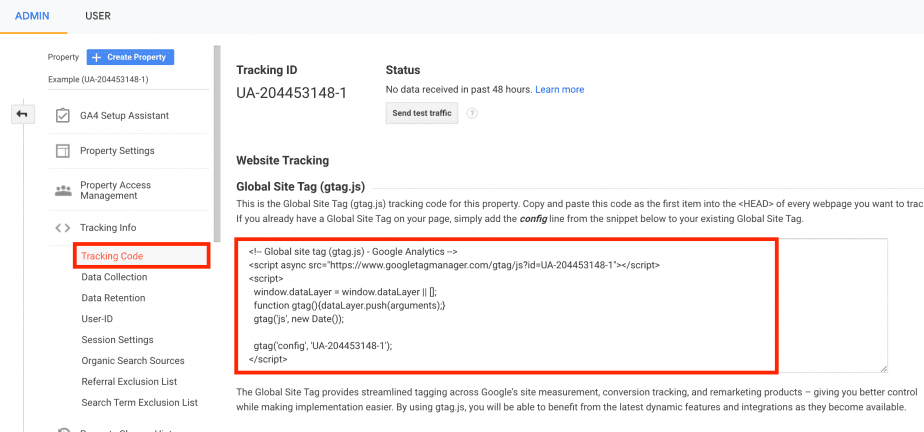
Add the Google Analytics code with Google Tag Manager
You can also add tags to your website with the help of Google Tag Manager if you use many analytics and ad performance tracking tools that need site tags.
For this, go to Tag Manager to create an account, choose an account name, country, container name, and pick the Target platform. Then, click Create.
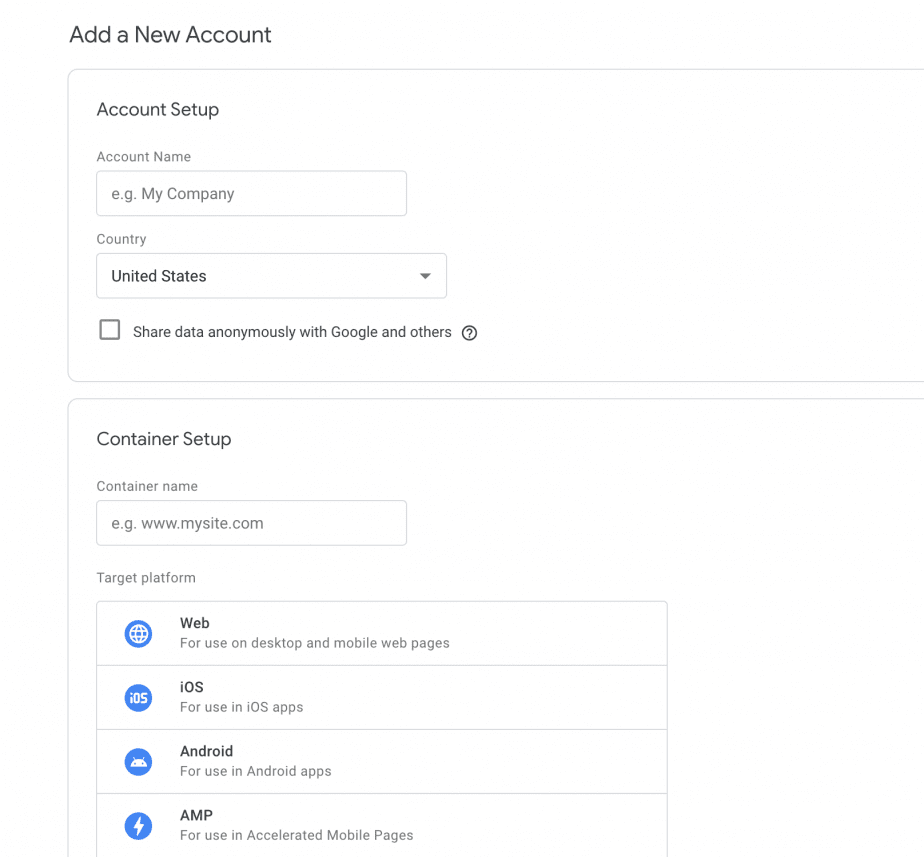
If you haven't installed Google Tag Manager and are not going to use Google Adwords, using gtag.js may be a better choice. The Global Site Tag makes the tracking process easier as it facilitates the installation process and stores all tracking tags in one place in your website code.
Add Google Analytics with a plugin
Another way to add a website to Google Analytics is by using different plugins. It is especially convenient if your site runs on a CMS, such as WordPress. First of all, there are dozens of available options that don't require that you use any codes. Secondly, you can see all the stats from the CMS dashboard and track all your form views, submissions, and other data related to your niche.
All you have to do is to upload and install a plugin, connect your CMS with your Google Analytics account, and then authenticate with your Google account.
Step 5: Check if the Google Analytics tracking code is working correctly
After adding the code to your website, go to the admin panel and choose your property. Then, click Realtime >> Overview. This report shows what's going on right now on your website. If your tracking code has been added correctly, you'll see some activity on your website in real-time.
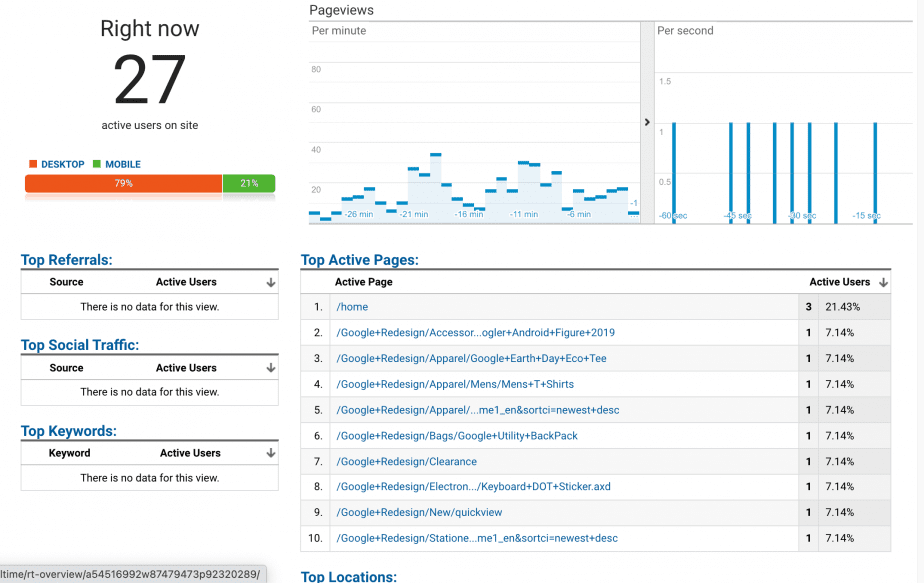
How to set up Google Analytics on CMS-hosted sites
There are also several different methods to setup Google Analytics for CMS-hosted websites. Let's take a look at how to connect GA with some of the most popular CMS—WordPress, Wix, and Shopify.
Note that so far only Google Sites, Wix, WordPress, and WooCommerce provide native support for the latest version of Google Analytics (GA4). So, if you are using one of the platforms that only accept the "UA" version, you should use Global Site Tag described in Step 5.
Check if your platform supports the latest version of Google Analytics in this table.
How to set up Google Analytics on WordPress
With WordPress, you can configure Google Analytics either with the help of plugins (the easiest way) or by installing GA in the WordPress theme. The latter method requires basic knowledge of code and is considered to be quite unreliable as the code may disappear if you update the theme. That's why we recommend using one of the free or paid WordPress plugins to track your blog, online store, or landing page. Among the most popular plugins are MonsterInsights, Google Analytics by 10Web, GA Google Analytics WP Google Analytics Events, ExactMetrics, WP Google Analytics Events, and others.
Let's see how to connect Google Analytics with your WordPress site using the MonsterInsights plugin.
- First, set up a Google Analytics account and property as we described in Step 1, 2, and 3.
- Then, install and activate the plugin. Go to the Plugins >> Add New page in your WordPress dashboard. Pick the plugin and hit the "Install Now" button next to it.
- Find the item "Insights" in the menu, click on it and open MonsterInsights setup wizard.
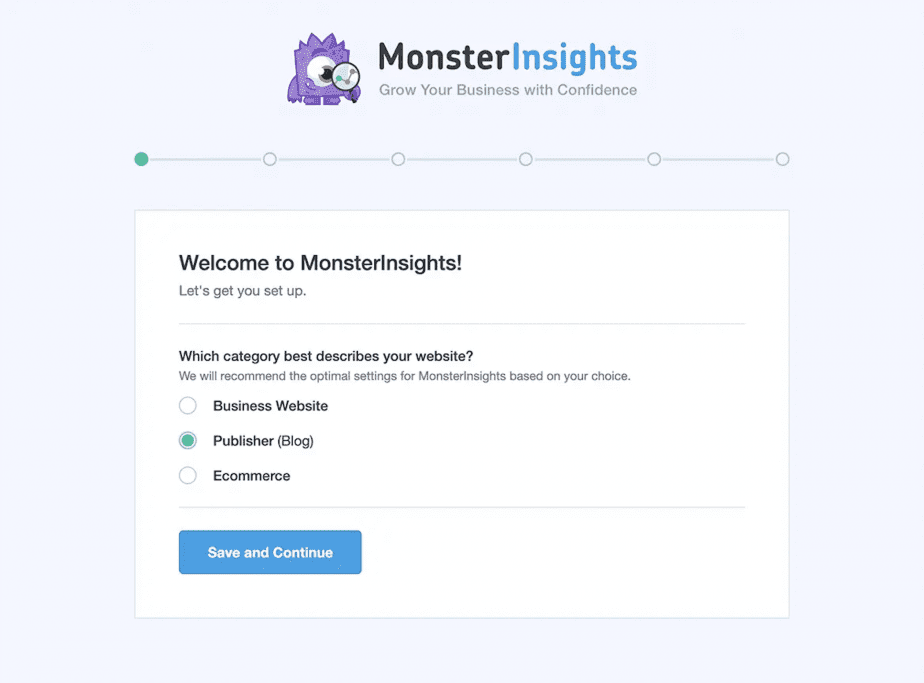
- Choose your website category and click "Connect MonsterInsights".
- Allow the plugin to access your GA account.
- Choose the website you want to monitor and click on the "Complete Connection" button to continue.
- To save your configuration, click on the Save and Continue button.
How to set up Google Analytics on WIX
Here's how to connect Google Analytics with your Wix website:
- Set up a Google Analytics account and property as we described in Steps 1, 2, and 3.
- Get your Google Analytics tracking code as described in Step 4.
- Select your property in GA and open Web stream details.
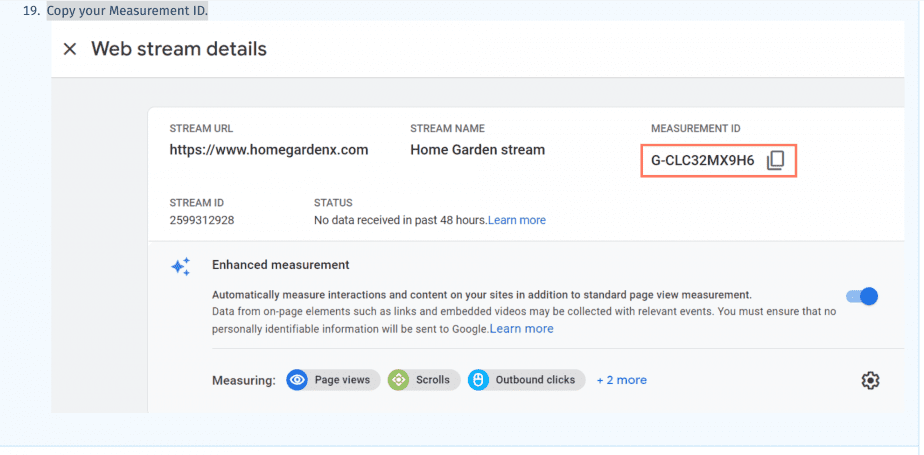
- Copy your Measurement ID.
- Go to Marketing Integrations in your Wix account.
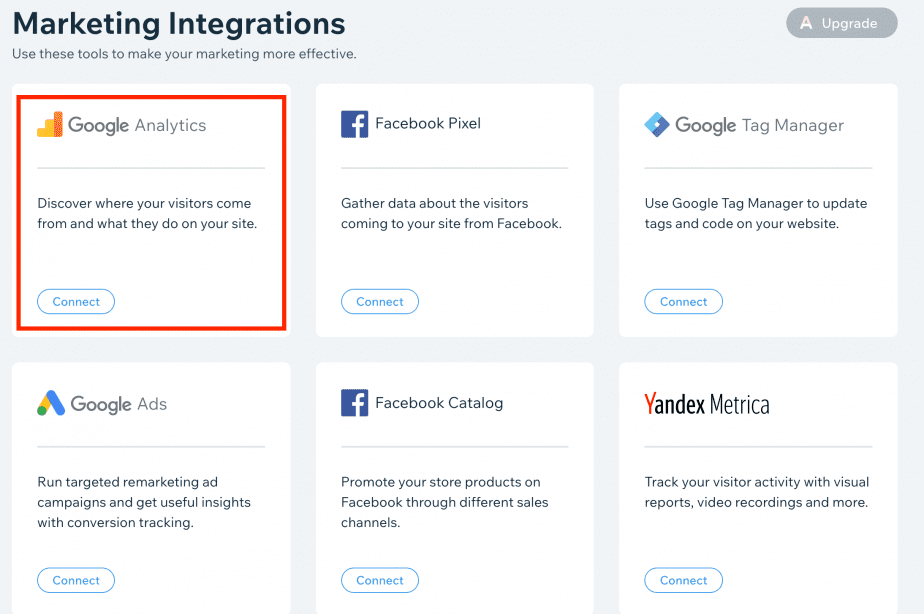
- Under Google Analytics, click Connect.
- Select Connect Google Analytics and paste in your ID: for Google Analytics 4 (beginning with "G-") and Universal Analytics Tracking ID (beginning with "UA-").
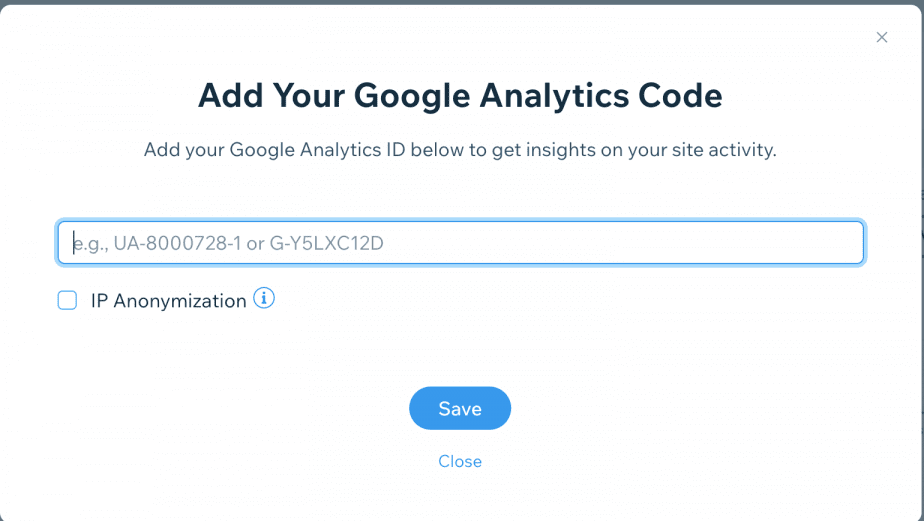
- Click Save.
How to set up Google Analytics on Shopify
Here's how to connect Google Analytics with your Shopify website:
- Set up a Google Analytics account and property as we described in Steps 1, 2, and 3.
- In Step 3 make sure to open the advanced options (below the property-setup fields) and turn on Create a Universal Analytics property—as it is compatible with Shopify.
- Copy your Google Analytics tracking code as described in Step 4.
- In the new window, open Shopify admin.
- Go to Online store >> Preferences.
- Paste the tracking ID into the Google Analytics field.
- Click Save.
How to connect Google Analytics and Search Console
There are several good reasons to connect Google Analytics and Google Search Console (GSC). Linking these tools gives you access to a broader set of data that would not be available only in GA. For example, your GA website behaviour and conversions data will be supplemented with keyword ranking, search position, and search impressions.
Let's say you run a shop selling scented candles. In GA you can see that one of the top-performing pages has got 55 users from organic search, but that doesn't give us enough data. However, when you connect to Search Console, you can also see that the top search query for this page is "scented candles on sale" which generates the most impressions. If we go to Google Search Console you can find performance data from Google Analytics.
Let's now see how to connect these tools:
- Log in to your Google Analytics account (as described in Steps 1, 2, 3)
- Note that by now you should have verified the ownership in Google Search Console. If you haven't done this yet, follow the step-by-step instructions on how to set up GSC.
- Then, go to the Acquisition section in the Google Analytics dashboard >> Search Console.
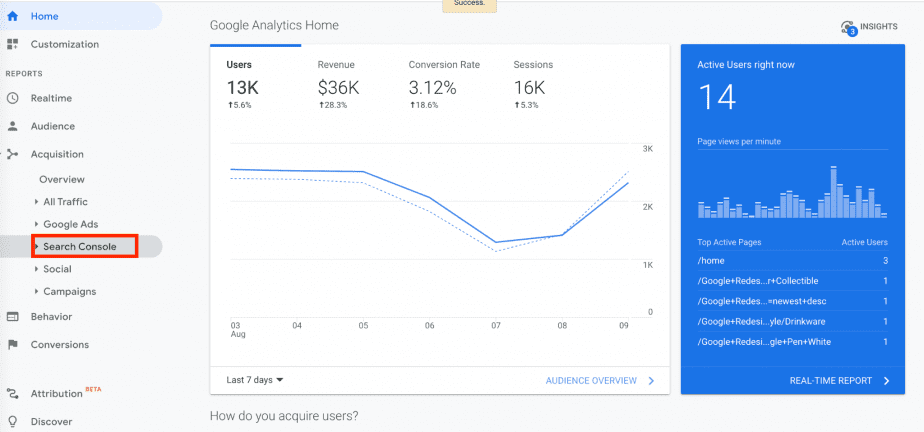
- Click the button "Set up Search Console data sharing"
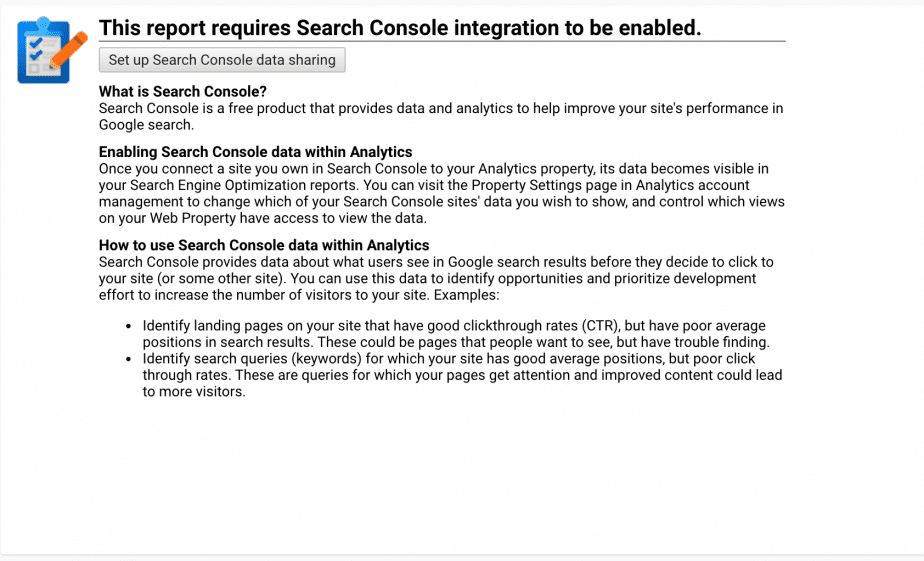
- Scroll down and click on the "Adjust Search Console" button

- You will be prompted to select a property in the new window.
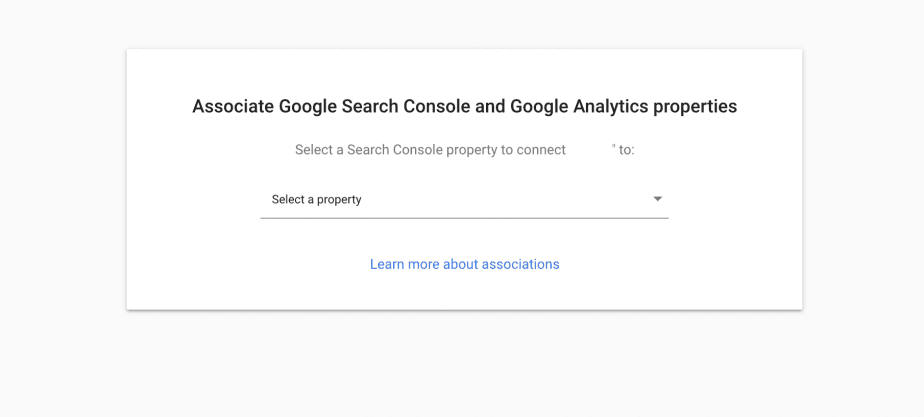
- Choose a property and click Continue >> Associate.
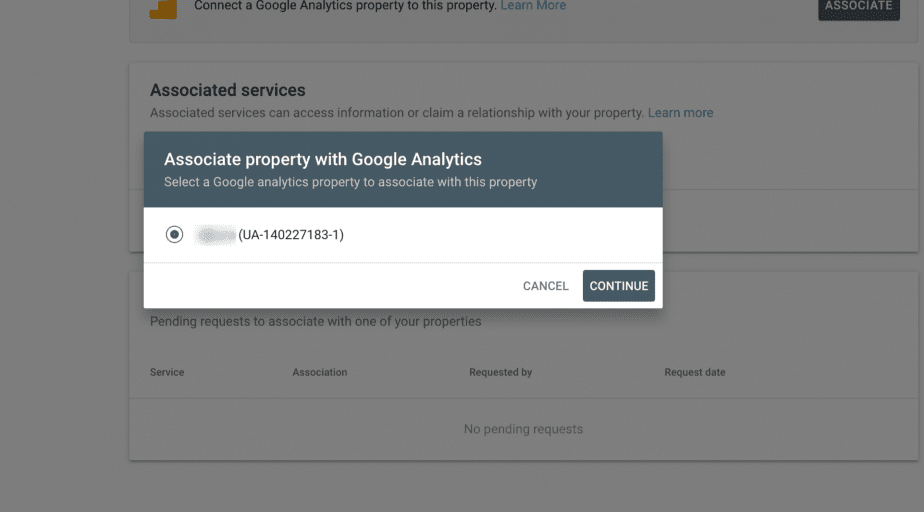
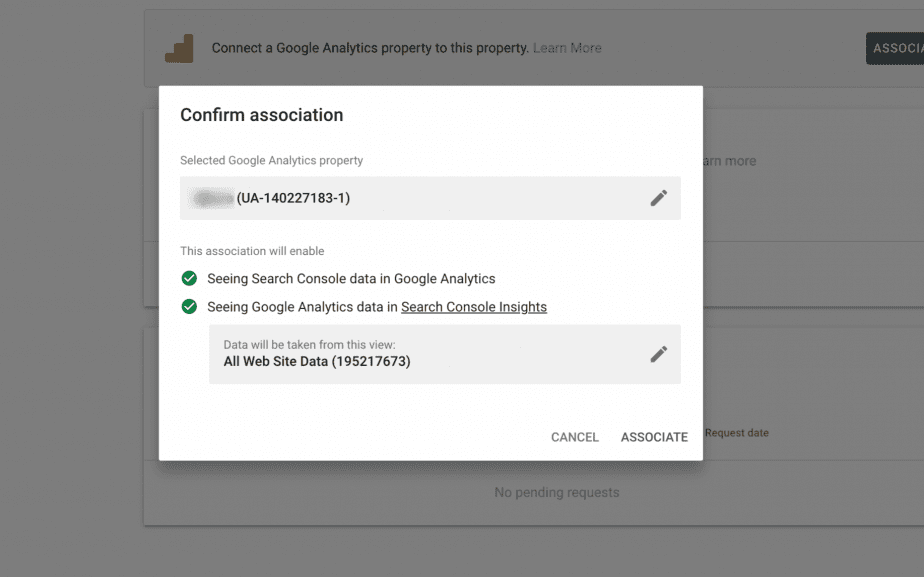
How to connect Google Analytics with SE Ranking
By integrating Google Analytics and SE Ranking, you can see the charts and graphs that show information about your website visitors (sessions, pageviews, session duration, etc), the countries from which visitors come to your site, and the traffic sources. You can also choose the date range you want to compare and analyze. All the data is clickable and available in one place. You can expand each section and see each parameter in detail.
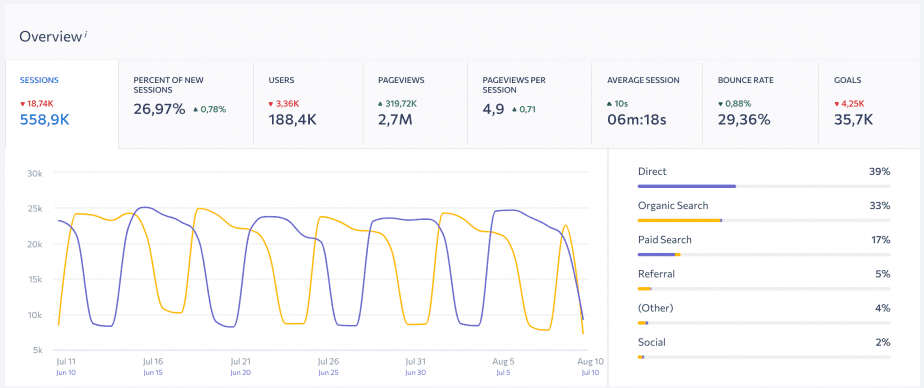
To connect Google Analytics with SE Ranking:
- Choose your project from the list.
- Go to Analytics & Traffic >> Overview
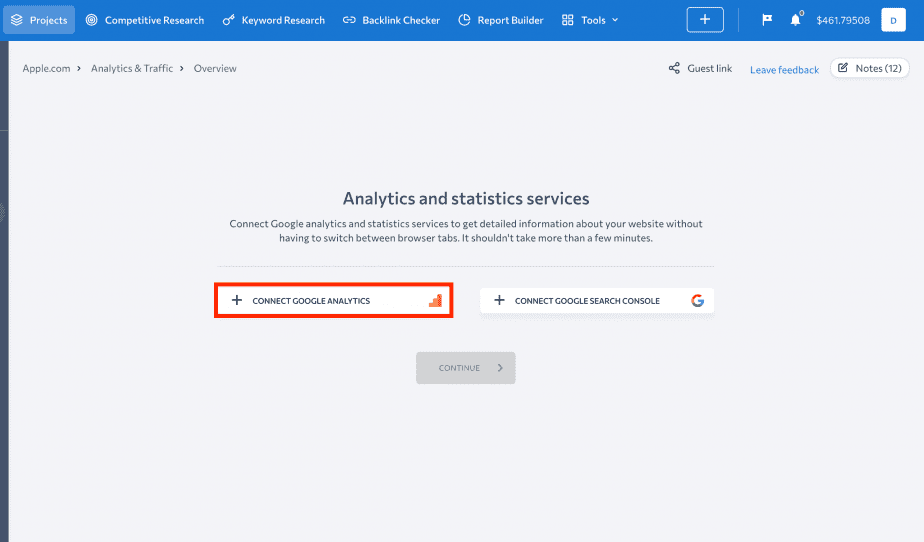
- Click on the button "Connect Google Analytics"
- Choose your Google Account, Google Analytics account, Properties & Apps, and View.
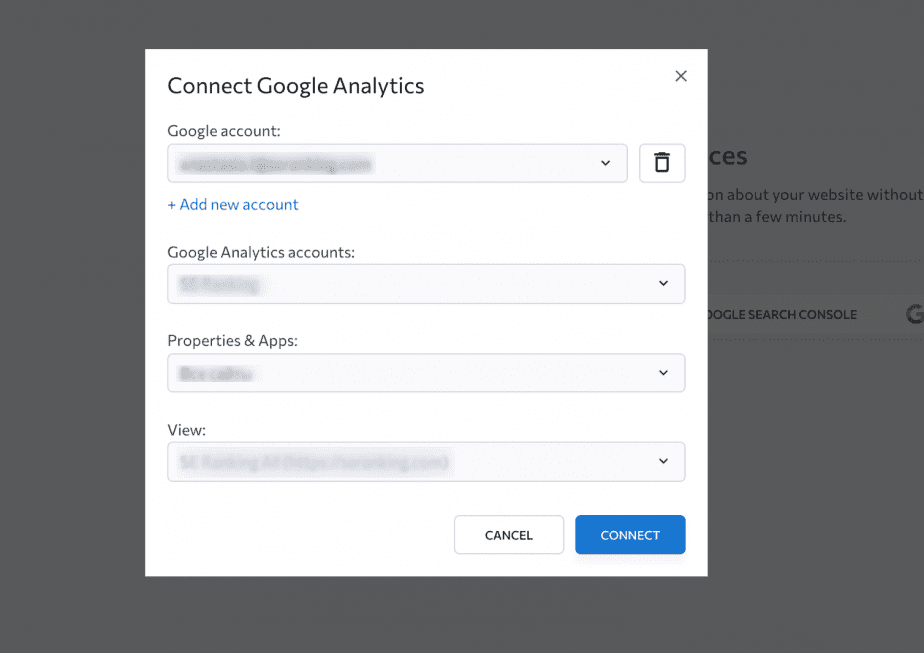
- Click "Connect".
Common GA issues and troubleshooting
We will not go into all the issues related to Google Analytics. Instead, we will list common problems that may occur during the account and property setup process:
- Typos, errors, or extra whitespace in the tracking code.
- Missing tracking code on some pages. You can check your website with verification tools, such as GA Checker or Google Analytics Debugger.
- Tracking code in the wrong place. Make sure that you placed the tag before the closing </head> tag.
- Google Analytics ID on your site (UA-XXXXX-Y) is different from the ID in your GA property settings.
Also, you can get some answers on Google support:
- If you are unable to sign in to your account, go to this troubleshooting guide and select your issue.
- If you have problems with the setup, find the relevant issue in the Troubleshoot tag setup and no-data issues.
Next steps
Once you have set up the account and property, move on to exploring the SEO metrics used in Google Analytics that outline traffic, where visitors are coming from, how long someone spends on your site, the most popular pages, and other measurements.
Create a new view
You can create a new view within the property to segment and compare data. For example, a view can include only organic search traffic or only mobile traffic.
- Click on the Admin button, move to the View column, and choose +Create View.
- Choose either Website or Mobile App and enter a Name. Here you should use a different name from your property. Make it descriptive, so that it would be easier to find the needed view in the list.
- Then, select the Time Zone and click Create View.
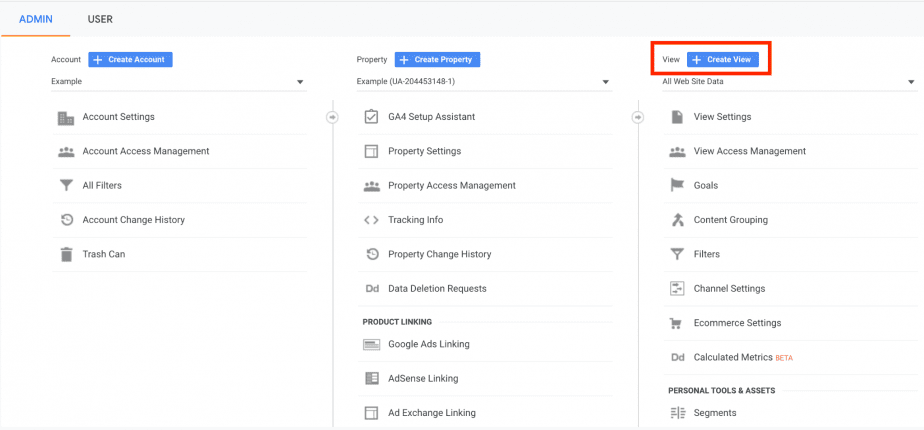
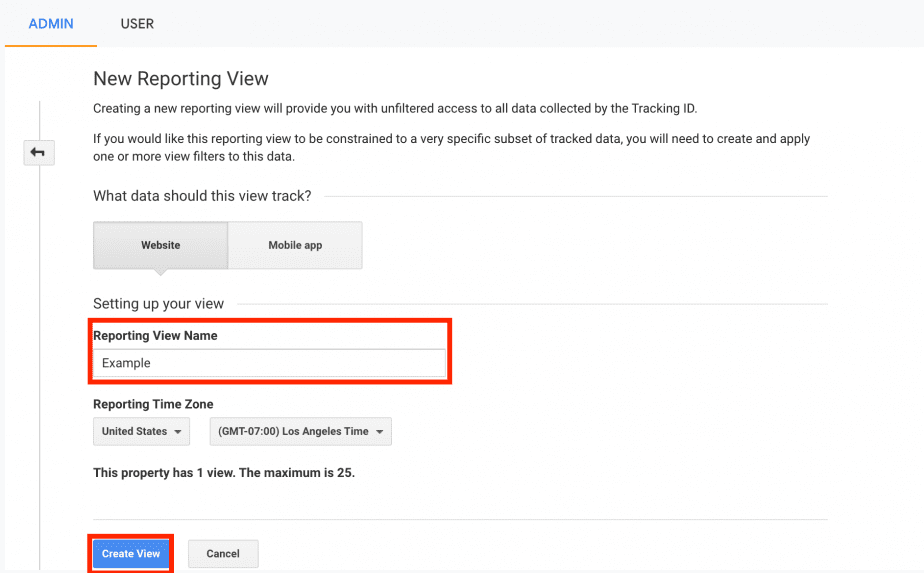
Then you are all set and ready for the Google Analytics configuration, which includes setting up goals, events, and conversions.
Conclusion
We hope that now you have a better understanding of how to set up Google Analytics. This is truly a great tool that provides webmasters with a lot of valuable information about a website, especially if paired with other services.
Here're some key takeaways from the article:
- Google Analytics is a free and fully automated tool that can be integrated with various services and CMS.
- To set up GA, you have to create an account, add a property, and get the tracking code.
- Google has recently introduced the new Google Analytics 4 (GA4) to replace the older version (Universal Analytics, or UA).
- If your CMS doesn't support GA4, choose the Universal Analytics property type.
- Google Analytics can be linked to Search Console to access a broader set of data that would not be available only in GA.
If you have any questions or issues with the GA setup, go ahead and write about them in the comments below.
Post Views: 1,841
Maria is a writer and editor at SE Ranking. For the best part of her career, she has built experience and expertise in content marketing and blogging. With a particular fondness for doing research, she has written on lots of tech-related topics, including SEO, fintech, blockchain, and startups. Her passion for travel and music allows her to broaden her outlook and use her strengths – creative and descriptive writing.
Google Analytics Property Vs View
Source: https://seranking.com/blog/google-analytics-setup/
Posted by: friersonjustitingich1966.blogspot.com

0 Response to "Google Analytics Property Vs View"
Post a Comment